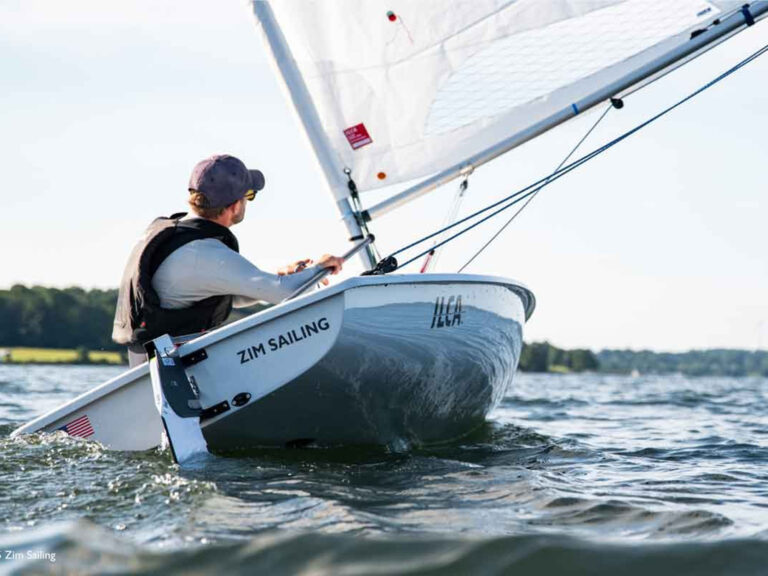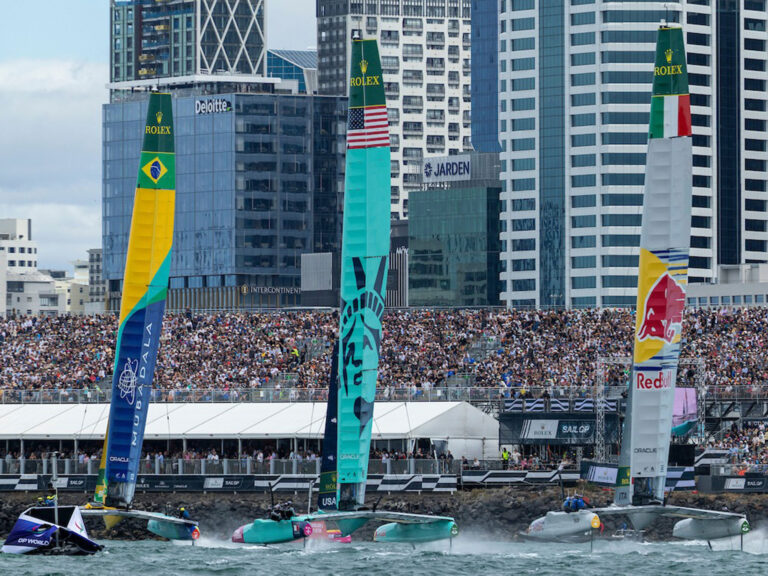
DReedSt
First-rate photography is essential to this magazine, and the challenge each month is culling our choices from hundreds of great images. While the selection process is tough, it pales in comparison to the effort the photographers put forth to get these images into our hands.Surprisingly, I’ve never met one that doesn’t love the job, despite the irregular pay and difficult working conditions. Saltwater eats alive their fragile, expensive equipment. The best pictures require wind, and with it comes waves, chop, and spray. They’re typically working from inadequate press boats that simultaneously rock, roll, pitch, and yaw-an awkward motion no amount of image stabilization can compensate for. Most races take place in the middle of the day when the light is harsh, and their targets (you and I) are always moving in unpredictable ways. They’re regularly shooed off the racecourse by agitated skippers and crews, and they have to endure postponements and downtime between races.With digital cameras, a sailing photographer’s workday is longer and more tedious than ever. There was once a time when after a day of shooting they had the luxury of tucking their film away to be processed later, or sending it off to a lab before heading to the bar to hang with the racers. But in any media center today, you’ll find them toiling away at their laptops, downloading images off memory cards and processing them well into the evening, long after the journalists have put the final touches to their stories.I don’t envy their working conditions, but I do envy their access to the action. As far as I’m concerned, the photo boat is the best seat in the house, and whenever there’s an opportunity to drive for one of them, I jump at it. But each time, I’m reminded that most sailors and race committees don’t like photo boats anywhere near the racecourse or its marks.I recently volunteered to drive for two of our regular photographers at the Rolex Farr 40 Worlds. During one race, as the fleet started, we slowly motored forward from our position just outside and upwind of the pin, keeping pace to leeward of the pin-end starters until we found an inroad to the heart of the fleet. Once there, we hovered near a few target boats, ultra cautious of our wake. It wasn’t long before, out of the corner of my eye, I spied a hard-bottom inflatable roaring at us. “Uh oh,” I thought instantly. “We’re about to get an earful.””You guys need to leave the racecourse now!” one of its passengers commanded. “And who are you with anyway?” After a brief explanation, we were told to go no closer than 100 feet from any boat. We tried our best, but whenever we got the chance, we snuck in close enough to capture the faces and hear the clicking of the ratchet blocks and the hushed guidance of the world’s best tacticians.We were constantly pushing the limits, but witnessing, by mere feet, the most important big-boat one-design regatta of the year was worth all the grief I knew I’d get from the organizers. I was merely enjoying the show while my photographers were making their living. My labor came later when trying to nail down the cover for this issue, a process made more difficult by my greater appreciation for the hardest working guys and gals in the industry.Many of them will be plying their trade at the America’s Cup in Valencia next spring alongside SW’s Senior Editor, Stuart Streuli, who has dibs on our press pass. You, too, can get in on the action with one of our package tours. If you do make it there, don’t forget to snap a few shots for the rest of us to enjoy.





